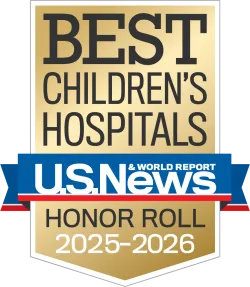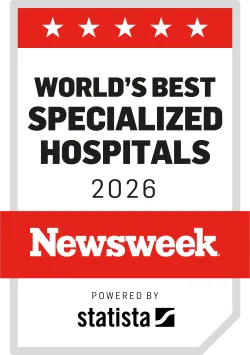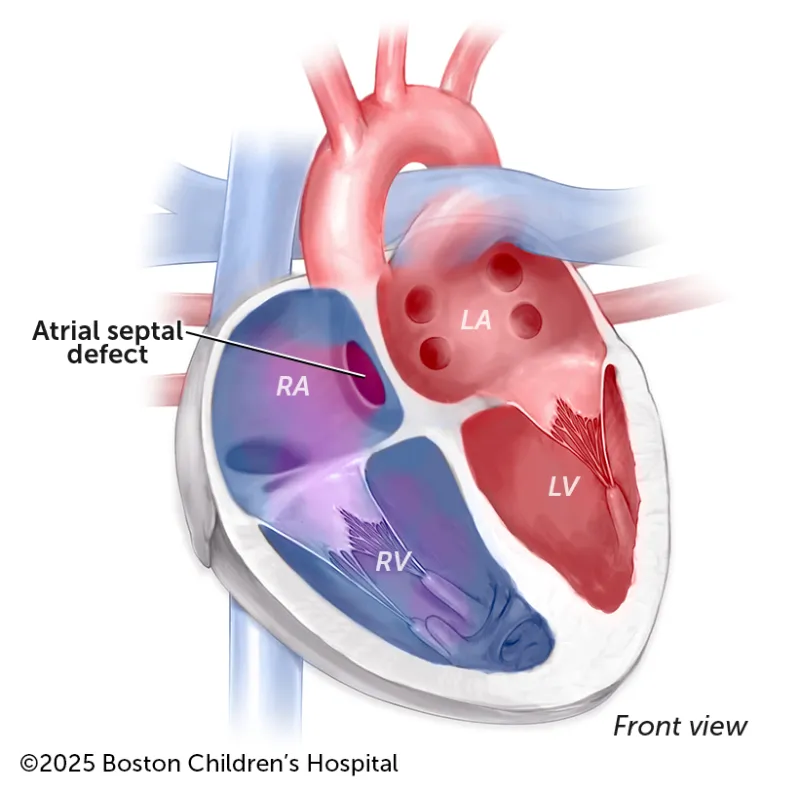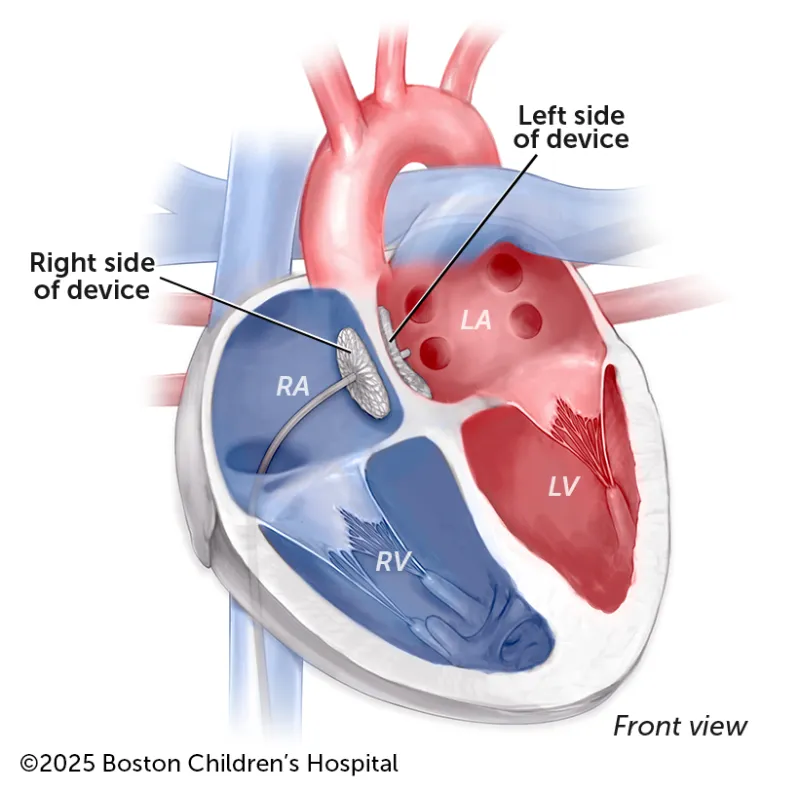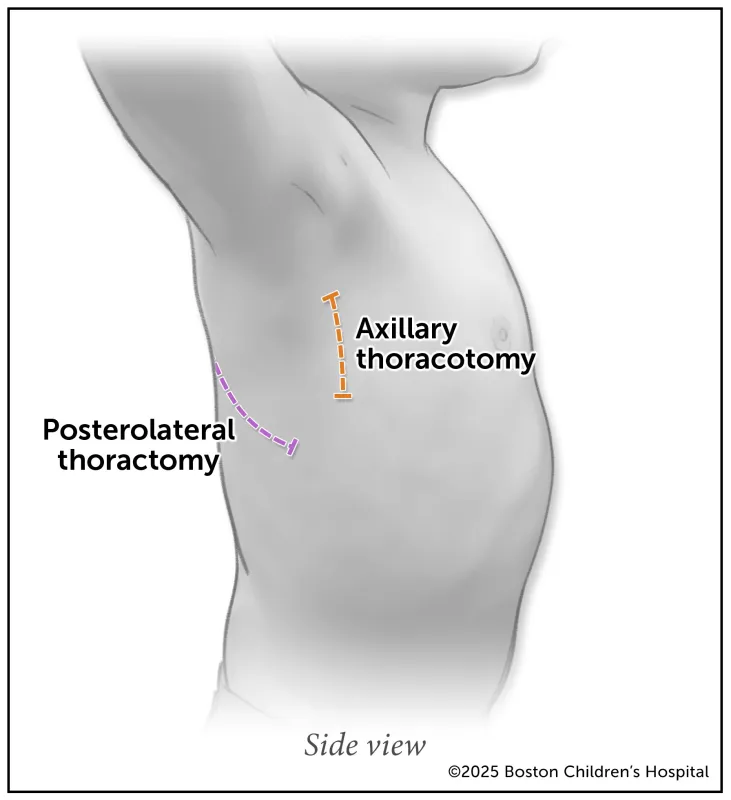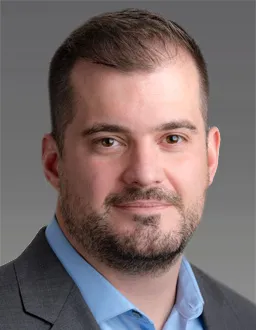Less oxygen-rich blood is pumped throughout the body because the hole between the left and right atria diminishes blood flow to the left ventricle, the main pumping chamber. The right ventricle ends up working harder and can weaken because it is now pumping oxygen-poor and oxygen-rich blood.
